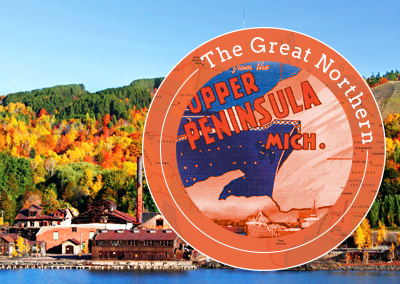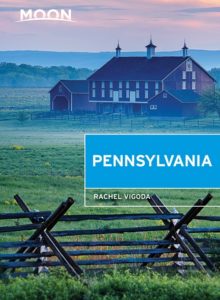Gettysburg
Totally overwhelmed by the influx of tourists visiting its namesake battleground, the town of Gettysburg (pop. 7,717) has survived both onslaughts remarkably unscathed. Despite the presence of sundry tourist attractions—wax museums, various multimedia reenactments of the battle and President Lincoln’s Gettysburg Address, even a Lincoln Train Museum displaying over a thousand model trains, including a scale replica of the Lincoln’s funeral train—once the day-tripping crowds have dispersed, Gettysburg is actually a pleasant place, with rows of brick-fronted buildings lining Baltimore and York Streets at the center of town.
There are, not surprisingly, quite a few places to eat. The atmospheric Dobbin House Tavern (89 Steinwehr Ave., 717/334-2100), south of town, serves above-average pub food in Gettysburg’s oldest building. Delicious cheesesteaks and burgers are served up at Hunt’s Battlefield Fries & Café (61 Steinwehr Ave., 717/334-4787). The dozens of places to stay include all the usual national chains, plus the circa-1797 Gettysburg Hotel (717/337-2000, $90 and up), on Lincoln Square right at the center of town.
Gettysburg National Military Park
Site of the most famous two-minute speech in U.S. history, and of the bloody Civil War battle that marked the high tide of Confederate fortunes, Gettysburg National Military Park protects the scenes of the struggle as they were July 1-3, 1863, when as many as 51,000 of the 165,000 combatants were killed or wounded. Over a thousand monuments mark the various historic sites around the 6,000 ac (2,428 ha) of rolling green pasture that form the park. The entire battlefield is evocative and interesting, but to make the most of a visit, start your tours at the visitors center (1195 Baltimore Pike, 717/334-1124, daily, $9-15), discreetly hidden away near Hunt Avenue east of Taneytown Road, 2 mi (3.2 km) south of town, where an extensive museum puts the battle into context and displays a huge array of period weaponry. A highlight is the famous circular Cyclorama, a 42-by-377-ft (12.8-by-115-m) painting-in-the-round that evocatively portrays the final Confederate assault on July 3, 1863. There are also numerous maps and guides available, including an excellent audio tour of the surrounding battleground.
North from the visitors center, a worthwhile quarter-mile walk leads north to the Gettysburg National Cemetery, where President Abraham Lincoln delivered his famous address on November 19, 1863.
A 230-acre (90-ha) farm on the southwest fringe of the Gettysburg battlefields was home to U.S. Army general and later president Dwight D. Eisenhower and his wife, Mamie, and is part of the 690-acre Eisenhower National Historic Site (717/338-9114, daily Mar.-Dec., free, $9 shuttle bus), now open for guided tours that leave from the Gettysburg visitors center.
Related Travel Guides
Pennsylvania Travel Map
















